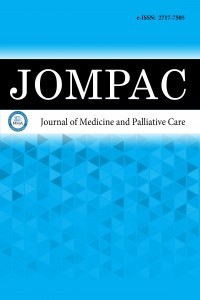1.
Hodler J, Kubik-Huch RA, von Schulthess GK, eds. Diseases ofthe chest, breast, heart and vessels 2019-2022: Diagnostic andInterventional Imaging. Springer: 2019.
2.
Li X, Zhang X, Liu Y, et al. Relationship between serum chlorideand prognosis in non-ischaemic dilated cardiomyopathy: a largeretrospective cohort study. BMJ Open. 2022;12(12):e067061.
3.
Hershberger RE, Hedges DJ, Morales A. Dilated cardiomyopathy:the complexity of a diverse genetic architecture. Nat Rev Cardiol.2013;10(9):531-547.
4.
Del Mestre E, Pio Loco Detto Gava C, Paldino A, et al. Arrhythmicrisk stratification in non-ischaemic dilated cardiomyopathy. EurHeart J Suppl. 2023;25(Supplement_B):B144-B148.
5.
Weintraub RG, Semsarian C, Macdonald P. Dilatedcardiomyopathy. Lancet. 2017;390(10092):400-414.
6.
Merlo M, Cannatà A, Gobbo M, Stolfo D, Elliott PM, Sinagra G.Evolving concepts in dilated cardiomyopathy. Eur J Heart Fail.2018;20(2):228-239.
7.
Sinagra G, Merlo M, Pinamonti B, eds. Dilated Cardiomyopathy:From Genetics to Clinical Management. Springer: 2019.
8.
Zecchin M, Merlo M, Pivetta A, et al. How can optimization ofmedical treatment avoid unnecessary implantable cardioverter-defibrillator implantations in patients with idiopathic dilatedcardiomyopathy presenting with “SCD-HeFT criteria?”. Am JCardiol. 2012;109(5):729-735.
9.
Halliday BP, Gulati A, Ali A, et al. Sex- and age-based differencesin the natural history and outcome of dilated cardiomyopathy.Eur J Heart Fail. 2018;20(10):1392-1400.
10.
Ferreira A, Ferreira V, Antunes MM, et al. Dilatedcardiomyopathy: a comprehensive approach to diagnosis and riskstratification. Biomedicines. 2023;11(3):834.
11.
Simon T, Becker R, Voss F, et al. Elevated B-type natriuretic peptidelevels in patients with nonischemic cardiomyopathy predictoccurrence of arrhythmic events. Clin Res Cardiol. 2008;97(5):306-309.
12.
Cesari M, Penninx BW, Newman AB, et al. Inflammatory markersand onset of cardiovascular events: results from the health ABCstudy. Circulation. 2003;108(19):2317-2322.
13.
Sampietro T, Neglia D, Bionda A, et al. Inflammatory markersand serum lipids in idiopathic dilated cardiomyopathy. Am JCardiol. 2005;96(12):1718-1720.
14.
Kaneko K, Kanda T, Yamauchi Y, et al. C-Reactive protein indilated cardiomyopathy. Cardiol. 1999;91(4):215-219.
15.
Wang BL, Tian L, Gao XH, et al. Dynamic change of the systemicimmune inflammation index predicts the prognosis of patientswith hepatocellular carcinoma after curative resection. Clin ChemLab Med. 2016;54(12):1963-1969.
16.
Tang Y, Zeng X, Feng Y, et al. Association of systemic immune-inflammation index with short-term mortality of congestiveheart failure: a retrospective cohort study. Front Cardiovasc Med.2021;8:753133.
17.
Öcal L, Keskin M, Cerşit S, et al. Systemic immune-inflammationindex predicts in-hospital and long-term outcomes in patientswith ST-segment elevation myocardial infarction. Coron ArteryDis. 2022;33(4):251-260.
18.
Wang Y, Ni Q. Prognostic and clinicopathological significanceof systemic immune-inflammation index in cancer patientsreceiving immune checkpoint inhibitors: a meta-analysis. AnnMed. 2023;55(1):808-819.
19.
Xie Y, Cen H, Wang L, et al. Relationships between inflammatoryparameters derived from complete blood count and quantitativeflow ratio in patients with stable coronary artery disease. Angiol.2023:00033197231197804. doi: 10.1177/00033197231197804
20.
Wang X, Ni Q, Wang J, Wu S, Chen P, Xing D. Systemicinflammation response index is a promising prognostic markerin elderly patients with heart failure: a retrospective cohort study.Front Cardiovasc Med. 2022;9:871031.
21.
Yuan M, Ren F, Gao D. The value of SII in predicting the mortalityof patients with heart failure. Dis Markers. 2022;2022:3455372.
22.
Lin KB, Fan FH, Cai MQ, et al. Systemic immune inflammationindex and system inflammation response index are potentialbiomarkers of atrial fibrillation among the patients presentingwith ischemic stroke. Eur J Med Res. 2022;27(1):106.
23.
Wu AH. Management of patients with non-ischaemiccardiomyopathy. Heart. 2007;93(3):403-408.
24.
Zhang ZH, Meng FQ, Hou XF, et al. Clinical characteristicsand long-term prognosis of ischemic and non-ischemiccardiomyopathy. Indian Heart J. 2020;72(2):93-100.
25.
Cho JH, Cho HJ, Lee HY, et al. Neutrophil-lymphocyte ratio inpatients with acute heart failure predicts in-hospital and long-term mortality. J Clin Med. 2020;9(2):557.
26.
Reina-Couto M, Pereira-Terra P, Quelhas-Santos J, Silva-PereiraC, Albino-Teixeira A, Sousa T. Inflammation in human heartfailure: major mediators and therapeutic targets. Front Physiol.2021;12:746494.
27.
Strand ME, Vanhaverbeke M, Henkens MTHM, et al.Inflammation and syndecan-4 shedding from cardiac cellsin ischemic and non-ischemic heart disease. Biomedicines.2023;11(4):1066.
28.
Rauchhaus M, Doehner W, Francis DP, et al. Plasma cytokineparameters and mortality in patients with chronic heart failure.Circulation. 2000;102(25):3060-3067.
29.
Kearney MT, Fox KA, Lee AJ, et al. Predicting death due toprogressive heart failure in patients with mild-to-moderatechronic heart failure. J Am Coll Cardiol. 2002;40(10):1801-1808.

